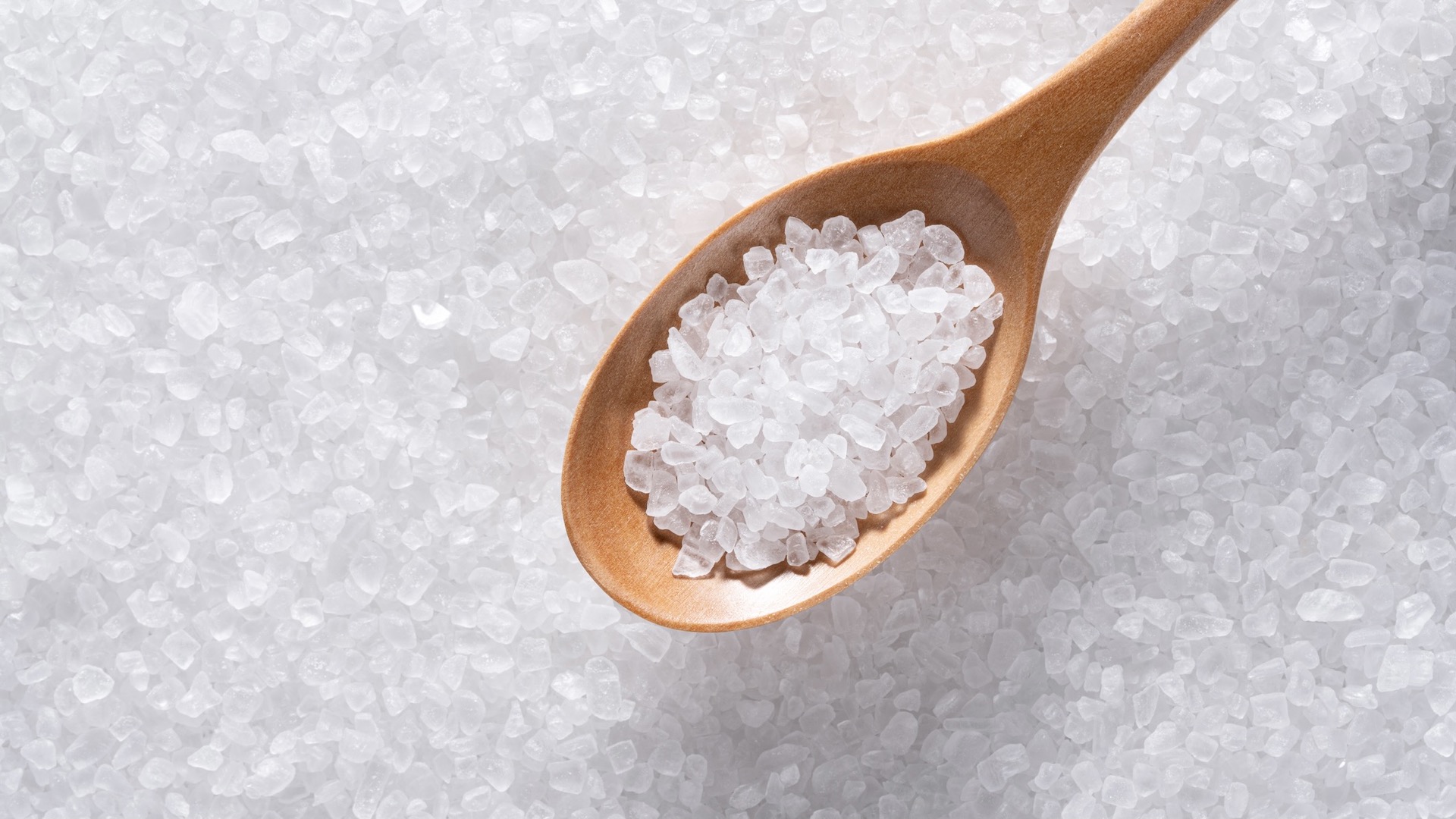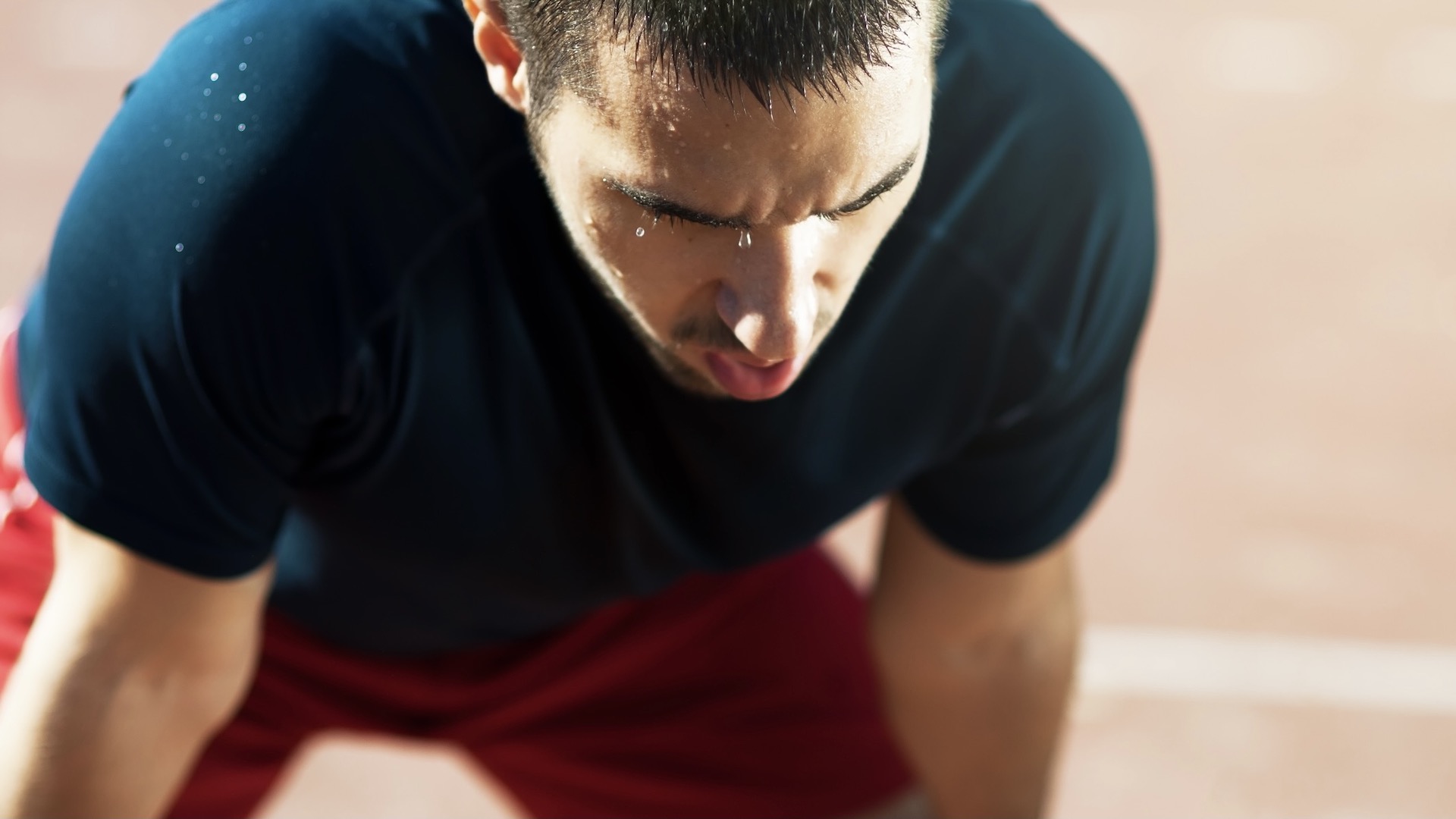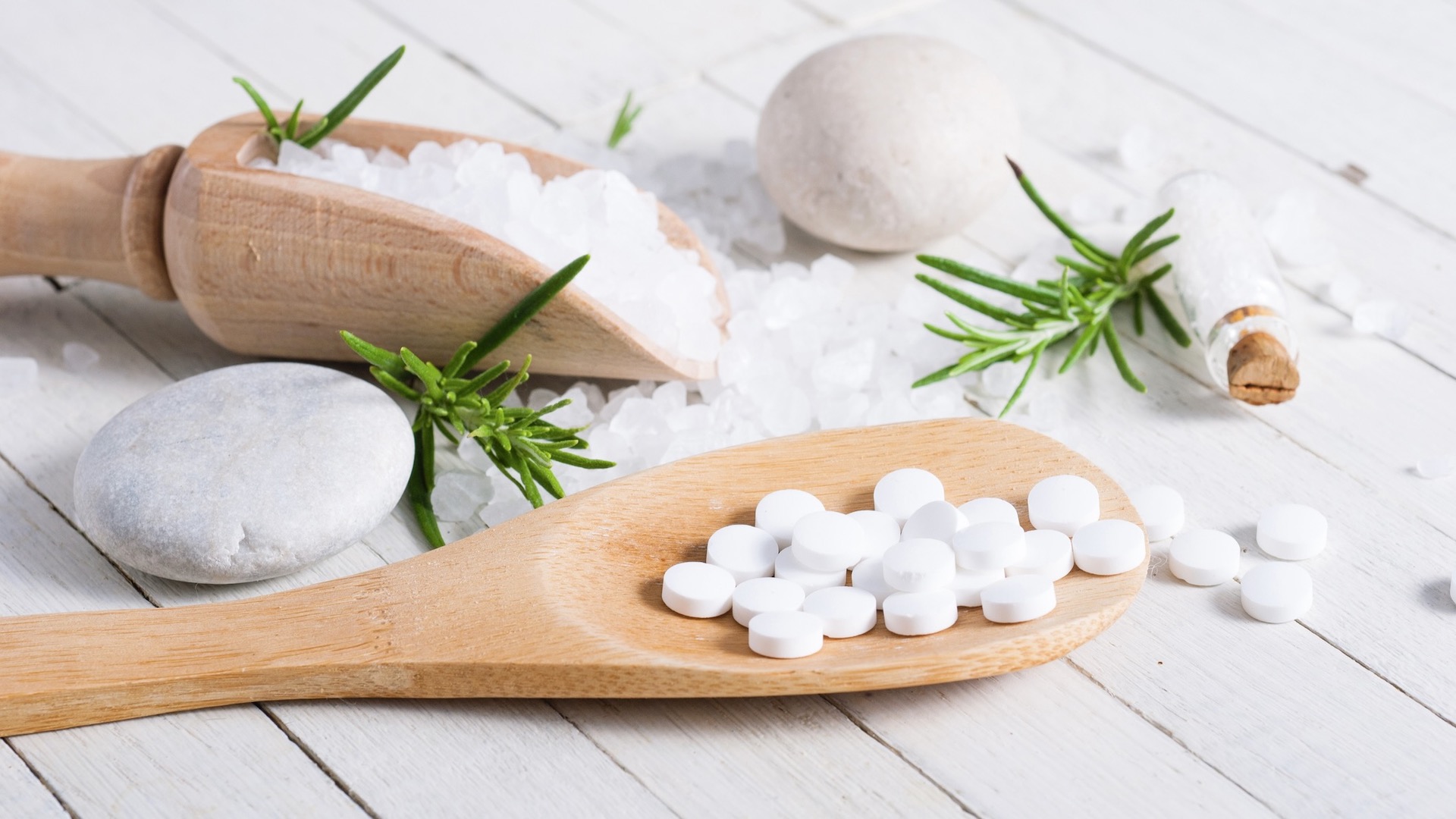
When you work up a sweat, it's not just your body's fluids you're depleting, but also its salt reserves. It may be that, if you've ever run a substantial distance in the summer heat, you'll have noticed not only the taste of salt in your sweat but possibly deposits of the stuff forming on your body too.
Salt gets quite a bit of bad press and it's true that it's not great for us in large quantities. However, we also need at least some of this essential nutrient to help the body to function properly. Nutritionists advise replacing lost salt after exertion, but what about during a run?
So, before you grab your trail running shoes and a handful of salt tablets, in this feature, we've consulted the research and asked the experts to explain the pros and cons of using salt tablets for running.
Do I need salt tablets when running?
There are different opinions on the need for extra salt for runners and these are evidenced by scientific research. In addition, everyone has different sweat and, subsequently, sodium (salt) loss so there is no one-solution-fits-all approach.
If you believe that salt loss is affecting your health or running performance, it's worth consulting a nutrition or sports science professional.
An accurate and personalised sweat test will help you to determine when – and if – you need to replace the salt lost.
It's up to individual runners to decide how they replace the salt they lose, whether through a balanced race diet, sports drinks or gels, or extra salt tablets.
Meet the expert
Today's best deals
The science of sweat
- We sweat to cool ourselves down
- Sweat is made up mostly of water but it also contains sodium, proteins, urea and ammonia
- The amount of sodium lost various from runner to runner
We sweat when our internal temperature rises. The sweat glands release water to the surface of the skin and, as the sweat evaporates, it cools the skin and the blood beneath the skin.
While sweat is mostly made up of water, it also contains sodium, as well as small amounts of proteins, urea and ammonia. It’s the sodium that makes sweat taste salty.
In general terms, the more intensely we exercise, the more sodium we lose in our sweat. However, sweating and sodium loss is very personal and each runner will have their own experiences. There are other reasons why we might sweat more, such as as we age and when women at the peri-menopause and menopause stage.
Sweat levels also depend on the weather, such as how warm it is and the humidity levels. At higher altitudes, where air pressure is lower, there is less oxygen in each breath. This can lead to dehydration, so when running at higher altitudes, we need to hydrate more. With that, your electrolyte requirements increase, including more sodium.

What does salt do?
- Sodium helps to maintain your body's fluid balance
- It plays a role in the absorption of nutrients, nerve impulse transmission and muscle contractions
On average, the body is made up of 50% to 70% water, depending on the amount of your personal composition of muscle and fat. About a third of this water exists outside the cells, in extracellular fluids such as blood. The main electrolyte in this extracellular fluid is sodium .
The total volume of extracellular fluid in your body is directly related to the amount of sodium you have in your body at any given time. So, in basic terms, the more sodium you have in your body the more fluid there is.
In this way, science shows us that sodium helps to maintain your fluid balance. Sodium also plays a role in the absorption of nutrients in the gut, as well as cognitive function, nerve impulse transmission and muscle contractions.
Most of the sodium that we consume is in the form of sodium chloride, which is basically the common table salt found in food and drinks.

What happens if we don't have enough salt?
- Water levels in the body will rise when sodium concentration falls
- This causes our cells to swell
- Low sodium levels can lead to dizziness, fatigue and nausea
Most people consume more salt than they really need in their diet. But when we exercise, and sweat, this can lead to low sodium levels and a need to replace lost salt.
Abby Coleman, a senior sports scientist who is part of a team of experts at Precision Fuel and Hydration, explains why runners require good sodium levels. “Sodium is an electrolyte that helps to regulate the amount of water that’s in and around the body’s cells," she says. "If sodium concentration falls below normal, the water levels will rise and the cells will begin to swell.
“This can lead to runners feeling dizzy, fatigued or nauseous. Some runners will end up being sick or in extreme circumstances, the brain can swell and this can lead to a coma or, in severe cases, death.”

The research behind salt tablets
- In one study, two-thirds of ultrarunners though sodium supplements were beneficial
- For recreational runners, whether or not you need additional sodium depends on your as an individual
In a study published in Applied Physiology, Nutrition, and Metabolism, researchers asked 1,100 ultrarunners whether they believed sodium supplements should be supplied during races. Two-thirds of participants said they thought sodium supplements, such as salt tablets, should be made available at ultramarathons.
Most of the participants stated that they thought salt tablets for runners would help to stop exercise-associated hyponatremia and muscle cramps.
Recreational runners may also be wondering if they actually need salt tablets. The answers is... it depends.
“We all sweat at different rates and this rate can change depending on what we are doing, how warm the conditions are and as we age or have other changes in health,” Coleman explains.
Although the methodology is not scientifically robust, it is possible to gain an idea of how much you sweat and whether you lose a lot of salt in sweat.

- A personalized sweat test by an expert will determine whether you need extra salt
- If you get salt in your eyes or get excess salt on your skin, you may have a high sodium content in your sweat
- In this case, replacing it may be important
“The best way to discover if you need extra salt when running is to have personalized sweat test carried out by an expert,” Coleman says. “However, there are other ways to tell you if you require extra salt when running. First of all, you need to know if you are losing a lot of sodium when exercising. For example, do you see white sweat lines on your clothes after a run? This is usually more apparent when the sweat dries in.
“Are you the sort of person who gets salt in your eyes from sweat dripping off your forehead and can you feel the grit of excess salt on your skin? If you experience any of these or all of them, the chances are you have higher sodium content in your sweat and need to replace this.”
A sweat rate measurement should ideally be done on a number of occasions and in a range of conditions if you want to extrapolate the results to use them as a guide in different contexts, such as planning hydration needs for an upcoming race.
What is a sweat test
- Weigh yourself before and after a run, taking any liquids you drink into account
There is a useful guide to doing a sweat test, which involves weighing yourself before and after running (and also taking into account the fluid you took on during the run). The equipment you’ll need to calculate your sweat rate is weighing scales, a dry towel and a kitchen scale to weigh your water bottles (if you’re planning to drink during the sessions where you’re measuring your sweat rate).
What are salt tablets for runners?
Salt tablets comprise electrolyte sodium in a tablet form. They usually have a higher sodium level than sports drinks, energy gels, and other fuel forms for runners.
Salt tablets: what do the experts say?
- Opinions and the results of research vary as to the use of salt tablets
- It's thought by some that gels, energy drinks and running snacks provide all the salt that would be needed for a long run

Experts' opinions vary when it comes to whether runners need to use salt tablets or not. Those in favor refer to various papers, including a 2015 study found that athletes who adequately replaced the sodium lost in their sweat finished a middle distance triathlon an average of 26 minutes faster than those who didn’t.
Further research focuses on a randomized controlled trial during a half-ironman event that included long-distance running. It found that “oral salt supplementation increases electrolyte concentrations in the blood”. In addition, taking salt tablets was found to help reduce the loss of water.
Another study conducted in 2016 concluded that taking a sodium chloride solution helped participants to more effectively retain fluid during and after exercise.
However, a study by Martin Hoffman, professor of physical medicine and rehabilitation at the University of California Davis, offers a different conclusion.
The 2015 research investigated the need for extra salt for runners, and concluded: “Exercise-associated muscle cramping, dehydration, hyponatremia and nausea or vomiting during exercise up to 30 hours in hot environments are unrelated to total sodium intake, despite a common belief among ultramarathon runners that sodium is important for the prevention of these problems. “
Hoffman's paper suggests that sodium itself will not help you to run better, and even when we lose a lot of sodium in sweat during a long run, a typical race diet will usually provide enough to make up for it. For example for many runners, it’s enough to regain salt depletion through sports drinks and gels that already contain sodium, as well as other foods such as crisps, pretzels or sandwiches.

How to use salt tablets for running
- Check the ingredients so that you know how much sodium is in your tablets
- Dissolve it in water according to the instructions on the packaging
- If you're using a sports drink, check how much sodium you're getting from that
- It's important not to overdose and the symptoms for too much salt are very similar to not having enough
If you do choose to use salt tablets rather than relying on salt already in hydration products and your diet. it's important to understand what the tablets are. Not all salt tablets for runners are the same. You should check the ingredients to know how much sodium, chloride and other electrolytes you will be consuming with each one.
A classic salt tablet weighs about 1g and has 200–700mg of sodium. You should dissolve it in water according to the instructions.
If you use sports drinks for running, check whether they contain sodium and then adjust the salt tablet dose accordingly.
You should take salt tablets only when needed, rather than all the time. During a normal short run, it is unlikely you will need them.
It is vital that you avoid overdosing on salt tablets. Taking more than recommended won’t improve your running performance but it could make you feel ill.
Salt tablet side effects will happen if you consume too much. The difficulty is that the symptoms – extreme thirst, fatigue, confusion, nausea and vomiting – can also be the same as not having enough salt on board.







